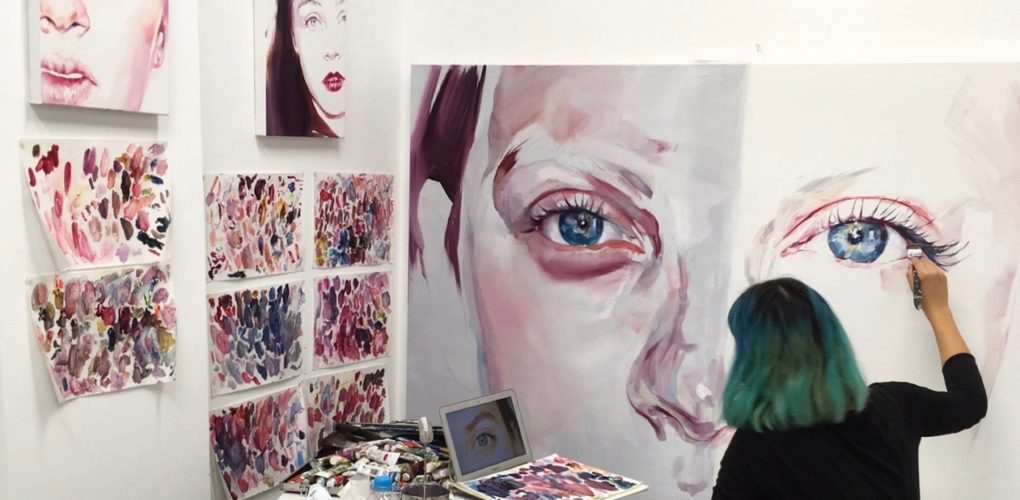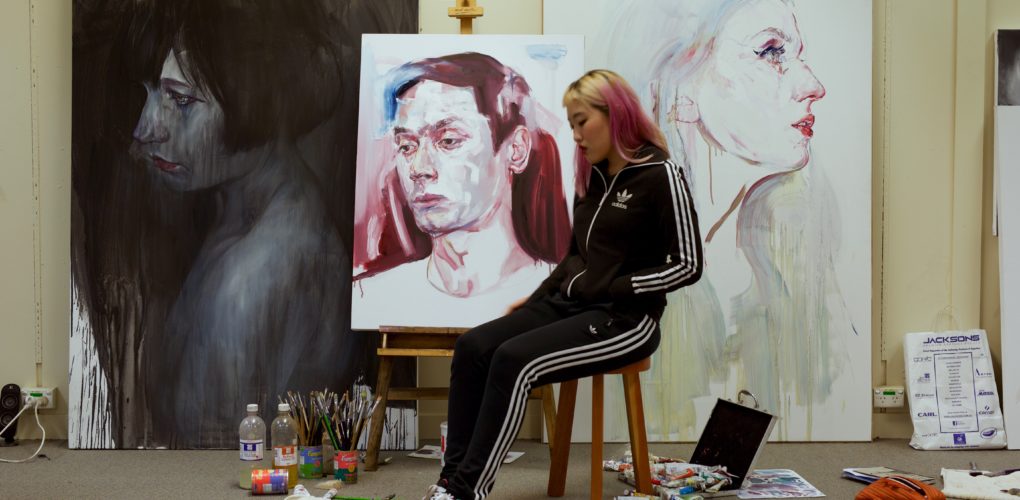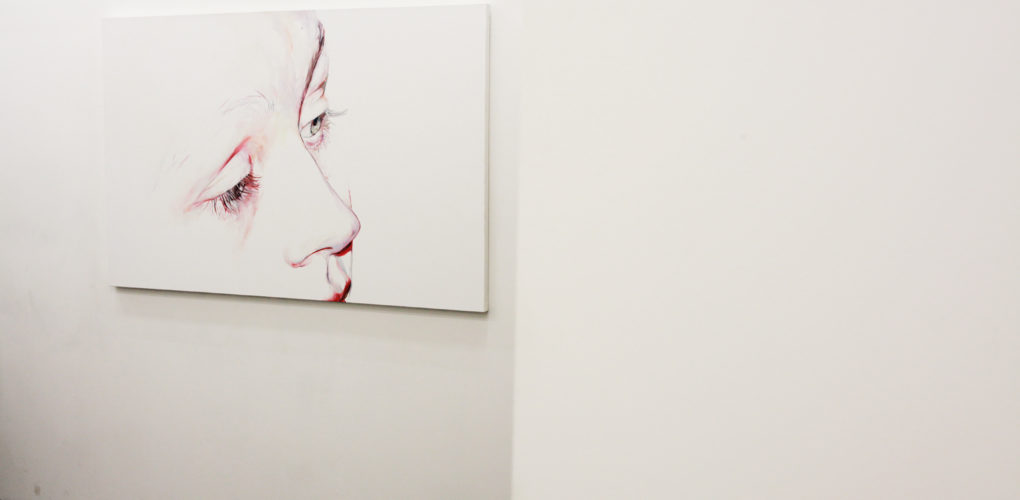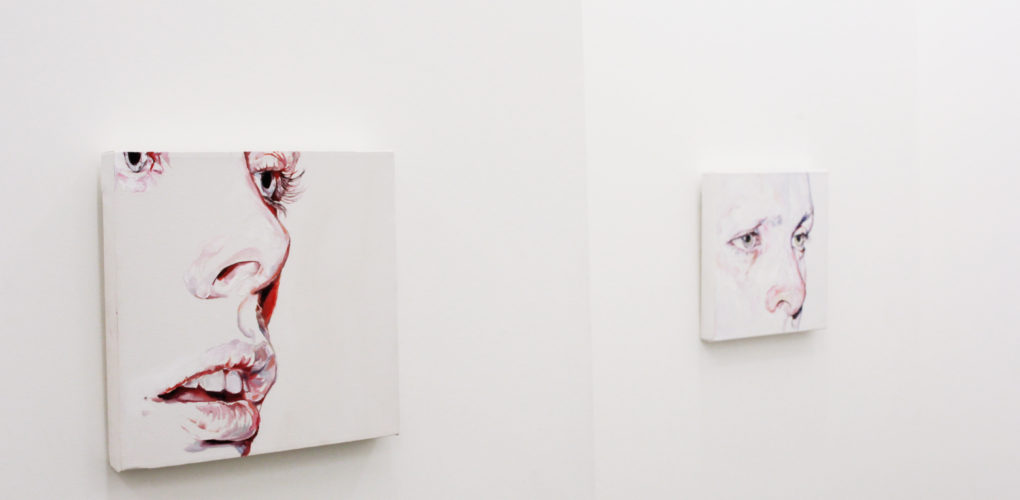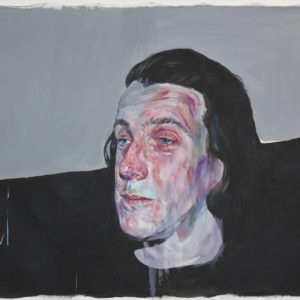One to Watch
 Kim Hyunji’s Figurative Paintings Challenge the Charade of Social Media
Kim Hyunji’s Figurative Paintings Challenge the Charade of Social Media
Kim Hyunji is of the selfie generation. A South Korean artist living and working in Australia, she captures portraits of individuals of her generation — people in their early twenties who rely on social media in the creation of an idealized persona. She is interested in exploring the role digital photography plays in our society, both in terms of how readily available it makes images, and in how people choose to present themselves. She balances photographic realism with painterly abstraction in her works, using impastoed acrylic and oil paint to add a sense of physicality and spontaneity to her works.
Kim received a bachelor’s degree of Fine Art & Design from Curtin University, Australia. She is the recipient of the 2015 Canning Art Award and has exhibited her works across Australia. Most recently, she had a solo show at Backwoods Gallery. Her works have been featured in Hi-Fructose Magazine.
What are the major themes you pursue in your work?
My recent work investigates how social media can be used in the creation of persona. The Internet offers us many tools in how we can present out virtual presence to others, and some individuals design careers around this. Currently I’m interested in looking at the cause and effects of curating self-presentation, how it may be empowering, misleading, or influential. I’m also interested in what gets left behind after curated self-presentation, what remains hidden or deemed unfit for external projections of character – be that emotional self censorship, strict aesthetic standards or what not. Social media can be useful for those wishing to write a particular narrative vision of themselves. My new work will explore these ideas.
How did you first get interested in your medium, and what draws you to it specifically?
In Korea, we need to take an entrance exam to show our practical skills when we apply for art school. Most of the art schools there only allow you to use watercolor and pencil when you take the entrance examination, and they prefer a certain ‘academic’ style with this medium. I suck at using watercolor paints as I always paint it really opaque and they prefer to see built-up layers of transparent marks. There were 2 or 3 schools that did allow you to use different mediums, so I began to practice with acrylics and oil.
I still remember the first time I used oil paints. It just made so much sense to me. I still can’t get over this medium even if it’s toxic and smells pretty gross, because of its texture.
How has your style and practice changed over the years?
I realized that I put fewer and fewer paint marks on the canvas compared to the past. Originally my work was leaning more towards photorealism than it is now. When I was in art school, one tutor critiqued/questioned me: “Why did you choose painting as a medium? Why not photography? Do you have any reasons to chose painting for this project?” …In many ways photography has replaced traditional painting. It was in these early days that I started to shift away from painting via photographic source material and started to focus on painting as ‘painting.’
Unlike photography, painting no longer relies on flatness; instead I see paint as a sculptural material to add physicality to my portraits. Abstraction and spontaneity of painting are other important characteristics in my work. I believe in the power of painting and I always try to push myself to try different styles.
Can you walk us through your process? Do you begin with a sketch, or do you just jump in? How long do you spend on one work? How do you know when it is finished?
For my process, first of all, I gather ideas from my everyday life– some issues I am facing or maybe some intriguing images I found. I’ll refine the idea that I’m working on, do some research about related issues, or other artists who work with similar subjects.
I also do sketches and collect photo images for reference. Photoshop replaced a big part of my ‘sketch study for painting’ section, but I still do rough drawings for my draft. I then prepare my materials, buy/stretch the canvas, paint the gesso multiple times and then sand it multiple times. When this is ready, I start painting. My painting process is pretty spontaneous. Sometimes I will finish the painting in one go, but most of the time I will spend multiple days or weeks refining. I finish the paintings when I feel satisfied, but it’s really hard to tell sometimes if it’s done or not, as there can be so many other options to complete it.
If you couldn’t be an artist, what would you do?
Standup comedian – I’m not talented enough for this job but I wish I was… I wanted to be a rapper too but I’m pretty bad at it.
Prefer to work with music or in silence?
Both, I love working in silence but it’s pretty hard to make a complete ‘silent environment’ in my studio, so I just listen to music at max volume to not get distracted while I’m painting.
Main photo courtesy of Robert Hague. Video courtesy of Lewis Rodan.

